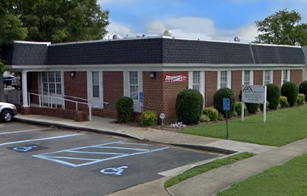Did a fresh face, fresh hairstyle, and fresh outfit get you to the car door feeling altogether fresh this morning?
You drove to work with a pure sense of confidence. You entered the building and once again the secretary looked worried. She said hello, like always, but how could she still seem so standoffish? You were feeling so fresh and ready for the day.
The Dilemma: You forgot to measure the freshness of your breath.
Whether it was garlic from your wonderful Italian meal last night, a forgotten tooth brushing session this morning or a chronic sinus infection, you don’t want bad breath to leave a negative footprint on your fresh day!
Studies show that our sense of smell is our most emotional sense. It is the sense that leaves the greatest impact on our memory and the memories of those around us. We don’t analyze the information of a scent, rather we get a feeling and from that feeling we often take action. As humans we can remember over 10,000 different odors, and we naturally attach memories to each one of them [3].
Breath is a strong component of one’s personal scent. Such scents can either attract or repel. Bad breath is a common problem. Also referred to as halitosis, it can lead to social humiliation, emotional and psychological issues as well as low self esteem[2].
There are three common types of halitosis. Most everyone has suffered from at least one.
Type I: True halitosis
This includes halitosis caused by specific food intake, morning breath, lack of nutrients, or seasonal allergies, which are all temporary versions of halitosis. It also includes halitosis that surfaces secondary to diseases such as gingivitis or periodontal disease. Both of which are associated with oral tissue damage. Other diseases that halitosis can occur secondary to are respiratory tract diseases and chronic sinus infections. Oftentimes, temporary halitosis can be avoided or cured through steadfast oral hygiene practices: brushing twice daily, flossing and using mouthwash. If true halitosis is thought to be occurring due to a secondary disease, it is wise to contact your primary healthcare provider. [5]
Type II: Pseudohalitosis
This is a delusional halitosis that occurs in the minds of healthy individuals. These individuals complain of having bad breath even when no one else can smell it. People who tend to exaggerate bodily sensations may be more likely to fall into this category of halitosis. In extreme cases, this type may need to be managed through counseling and the presentation of literature that explains true halitosis and it’s prevention[1].
Type III: Halitophobia
Some individuals may continue to associate themselves with halitosis even when they have been tested for both true halitosis and pseudohalitosis. These individuals are categorized as halitophobic[4].
Whether you are suffering from true halitosis, pseudohalitosis, or halitophobia, maintaining your oral health through proper dental hygiene is always a step in the right direction! For more information on temporary halitosis ask your dentist about specific dental products that you may want to try!
Fun Facts:
+ The Latin “halitus” means breath. The Greek suffix “osis” means condition, action or pathological process. Combined, halitosis means bad breath.
+ Clinical surveys have shown that over 90% of all breath malodor originates in the mouth and only 10% can be traced to internal problems. [4]
+ A person’s mouth is home to hundreds of different species of bacteria. There is a constant battle for living space between bacteria which generate waste products causing bad breath[4].
+ The bacteria causing halitosis can live in the spaces between the gum and the tooth as well as on the surface of the tongue[2].
Sources:
1.Akpata O, Moregie OF, Akhigbe K, Ehikhamenor EE. Evaluation of oral and extra-oral factors predisposing to delusional halitosis. Ghana Med J 2009: 43(20:61
2.Arunkumar, Dr. Shantala – Halitosis: Discover the Cause and Say No to It. http://www.ijmhs.net ISSN:2277-4505
3.Richard Axal, Linda Buck. Odorant Receptors and the Organization of the Olfactory System. http://www.nobelprize.org/nobel_prizes/medicine/laureates/2004/press.html
4.Kapoor A, Grover v., Malhotra R, Kaur S, Singh K. Indian Journal of Clinical Dental Science 2012: 3(1):15-19
5.Yaegaki K, Coil JM. Examination, classification and treatment of halitosis-clinical perspectives. J Can Dent Assoc. 2000: 66:257-261
P.S. Special posting on PET halitosis in reply to a Facebook request:
Does your pet have bad breath?
The bad breath of most canine’s is a result of gum disease and/or plaque and tartar build-up. In rare cases, your pet’s bad breath could be the result of more serious medical problems in the mouth, respiratory system, gastrointestinal tract or other organs. Your veterinarian can best determine the cause of your pet’s halitosis. Here are some preventative steps provided by the ASPCA (http://www.aspca.org/pet-care/) for you and your pet to take:
+ Bring your pet in for regular checkups and ask your vet to monitor the state of your pet’s teeth and breath.
+ Feed your pet a high quality diet and make sure he does not eat garbage or the stools of other animals.
+ Brush your pet’s teeth everyday if possible. This practice needs to be started early. (consult vet on how to properly perform such cleanings)
+ Provide hard chew toys that allow your pet’s teeth to be cleaned by a natural process of chewing. (Similar to a human eating an apple)
+ Give your pet well-researched treats to improve its breath
But as always, if deeper medical problems are present, these recommendations may only mask bad breath and will not treat the deeper problems at hand.
Many smiles,
Jess





